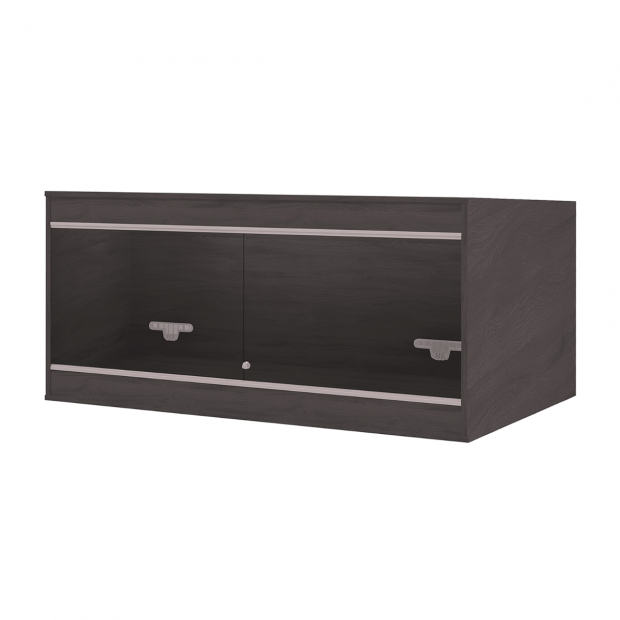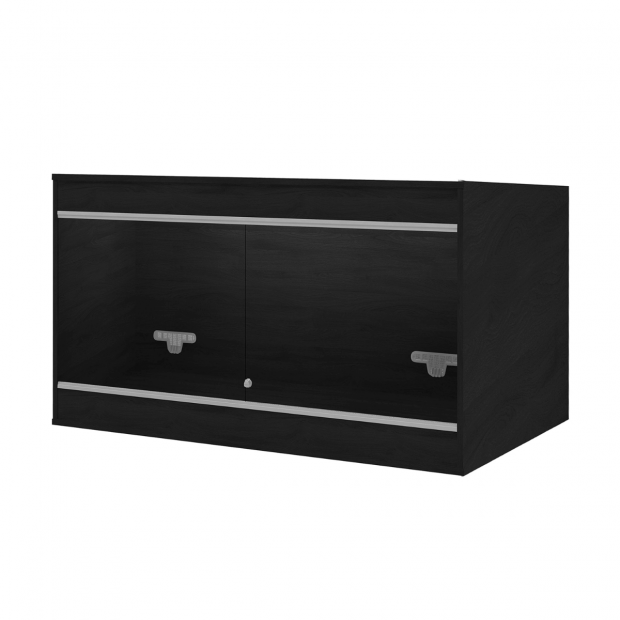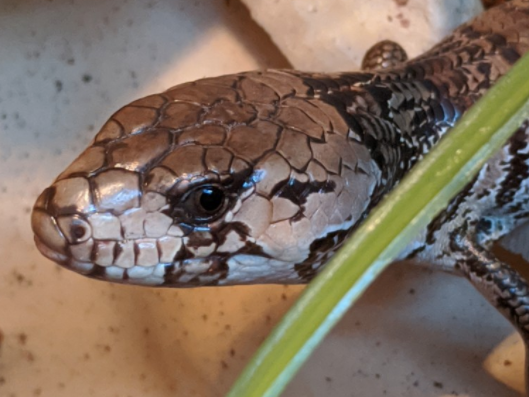-
Categories: Care sheetsLizards
Pink tongue skink, Cyclodomorphus gerrardii, care sheet
Pink tongue skink, Cyclodomorphus gerrardii, husbandry guide from the experts at Swell Reptiles, covering housing, heating, lighting and more.
Pink tongue skink, Cyclodomorphus gerrardii
Pink tongue skinks are intelligent, docile and great to have around

- Pink tongue skinks are highly intelligent and fun to keep
- A smaller alternative to the ever-popular Blue tongue skink
- Docile temperaments mean they tolerate handling well
Do Pink tongue skinks make good pets?
Pink tongue skinks are medium-sized, highly intelligent and generally docile reptiles that make great pets. This species is smaller than the slightly more common Blue tongue skink, which is also a plus for many keepers as they can live in slightly smaller enclosures, although they do still need a good amount of space for their size.
All of the Pink tongue skinks for sale at Swell Reptiles are captive bred in the UK, significantly reducing the risk of parasitism and disease, whilst also reducing the impact on the overall environment.
What size enclosure does a Pink tongue skink need?
Due to their high intelligence and decent size, Pink tongue skinks should be provided with plenty of space to roam and fill with enrichment. Here, we recommend a minimum adult enclosure size of 120 x 60 x 60cm (4 x 2 x 2ft), for example, the VivExotic Repti-Home Bearded Dragon Vivarium Large.
Wooden vivariums are generally chosen for Pink tongue skinks, as they tend to hold the heat much better, although due to their higher humidity requirements, they must be treated with vivarium sealant around the inside joins to prevent moisture damage. Glass or PVC enclosures can also work, but they tend to be difficult to source in larger sizes.
Do Pink tongue skinks need to be heated?
As with all reptiles, Pink tongue skinks are ectothermic and cannot control their own body temperature without the help of external sources. The ideal basking temperature for a Pink tongue skink is between 33-35°C (91-95°F), with the cool end dropping to around 20-25°C (68-77°F). At night, the temperature can be allowed to drop as it would in nature to around 20°C (68°F).
The best way to achieve this thermogradient is using an overhead heating system such as a basking lamp connected to a dimming thermostat, or a ceramic heater connected to a pulse thermostat. If overnight heating is required to maintain 20°C (68°F), this should be done using a non-light emitting heat source only, such as a ceramic heater.
Do Pink tongue skinks need UV?
To enable them to metabolise vitamin D3 and properly assimilate the calcium from their diet, Pink tongue skinks should be kept within a UVI range of 3-4. The best way to achieve this is using an Arcadia ProT5 Kit - Forest 6% placed 30-40cm (12-15”) above the basking zone, or an Arcadia ProT5 Kit - Desert 12% placed 40-60cm (15-24”) above the basking zone.
What substrate do I need for my Pink tongue skink?
Pink tongue skinks love to burrow and dig, so their substrate should provide them with the opportunity to exhibit these natural behaviours. A loose, soil-based substrate is best for this species, as not only does it allow them to dig and burrow, but it will also help to keep humidity levels up.
This can be simple coco soil, or a more sophisticated planting soil such as Arcadia EarthMix or ProRep Bio Life Forest if you wish to add live plants to the terrarium, as coco soil alone does not make the best growing medium for plants.
How do I decorate a Pink tongue skink’s vivarium?
Pink tongue skinks are very intelligent, so their surroundings should provide them with lots of enrichment to keep them stimulated and prevent boredom. This should be done using a variety of hiding caves, logs, cork bark flats, round or half rounds, foliage, branches and vines in the form of real or artificial plants.
What do Pink tongue skinks eat?
In nature, Pink tongue skinks have a very limited, insectivorous diet, which consists almost solely of live snails. Snails are readily available in the hobby as feeders, so we strongly recommend against taking snails from outside as this greatly increases the risk of parasitism and other diseases.
To provide your skink with all the vitamins and nutrients required to remain healthy, we recommend dusting all snails with supplements according to a schedule. For this, we recommend using a calcium-rich multivitamin on every feed, such as Arcadia EarthPro-A, a calcium plus magnesium supplement on every fourth feed, such as Arcadia CalciumPro Mg and finally, a vitamin D3 supplement on every eighth feed such as Arcadia EarthPro RevitaliseD3.
How do I buy a Pink tongue skink?
If you would like to purchase one of our UK captive bred Pink tongue skinks, please come into our store and see us. We will ask to see a few images of your set-up ready for the skink to go into, and ask a few quick questions to ensure you are ready for the commitment. We reserve the right to refuse adoption to anyone we feel is unprepared to adopt.
For more detailed husbandry information, please refer to our dedicated Pink Tongue Skink Care Sheet.
We also sell many alternatives to the Pink tongue skink, such as the Fire skink.
| Common names | Pink tongue skink |
| Scientific name | Cyclodomorphus gerrardii |
| Country | Australia |
| Captive-bred | Yes |
| Adult size | 15cm (6”) |
| Natural habitat | Arid grasslands in humid burrows |
| Housing | 120 x 60 x 60cm (4 x 2 x 2ft) |
| Ideal temperature | 33-35°C (91-95°F) (warm end); 20-25°C (68-77°F) (cool end) |
| UVI | 3-4 |
| Ideal humidity | 60-70% |
| Diet | Omnivorous |
| Average lifespan | 15-20 years |
| Personality | Skittish but can be tamed |
| Ease of handling | Easy |
| Cohabitable | No |
-
 Fire skink, Lepidothyris fernandiFrom £50.00Out of stock
Fire skink, Lepidothyris fernandiFrom £50.00Out of stock







